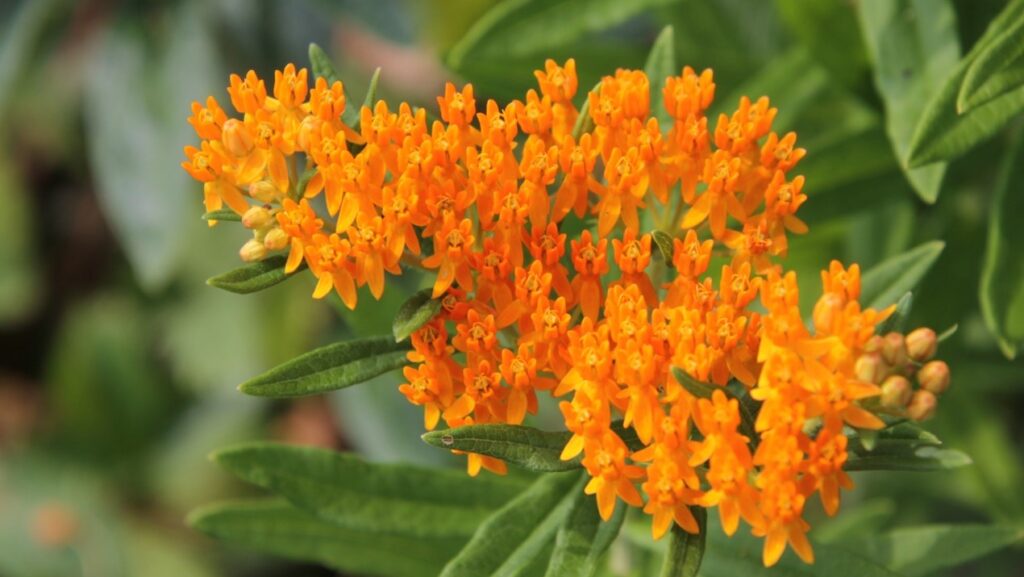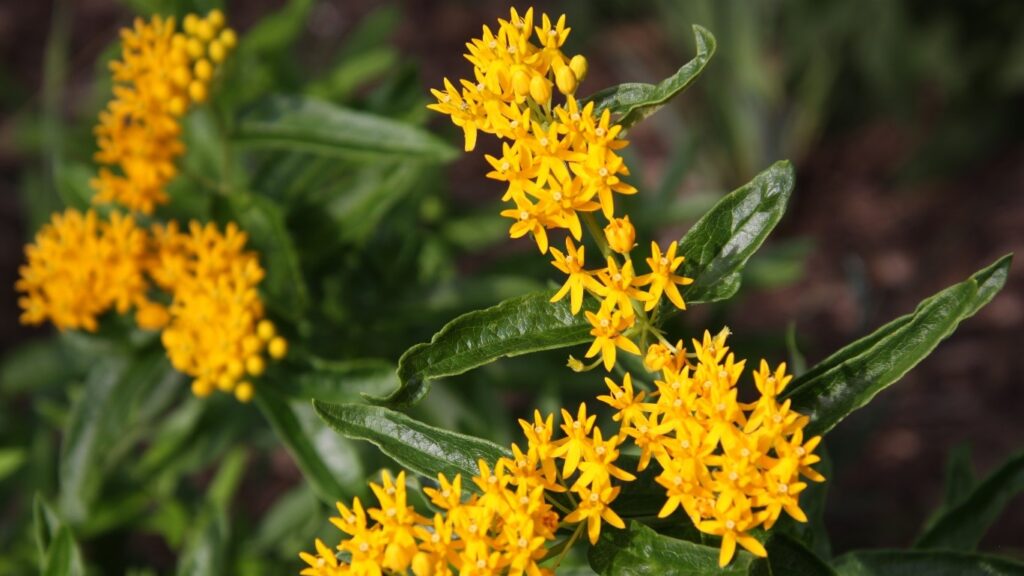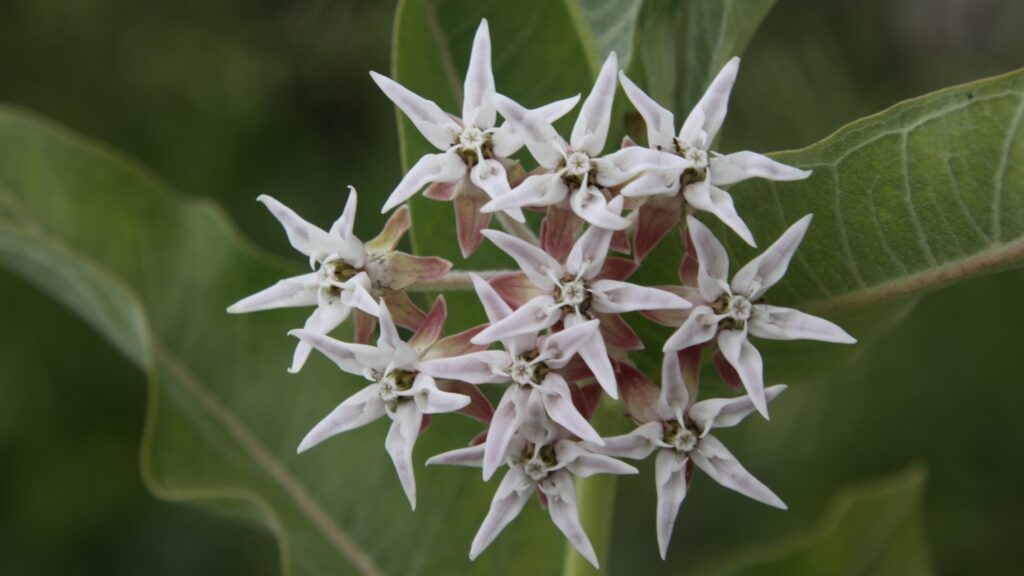
Milkweed is one of the most attractive plants for pollinators and an important food source (in the form of nectar, leaves, and even roots) for butterflies and other arthropods. The three most common species found in our region are A. syriaca (common milkweed), A. tuberosa (butterfly milkweed), and A. incarnata (swamp milkweed), all of which you can also find at the Arboretum. This herbaceous perennial of the dogbane family (Apocynaceae) started blooming in May and will continue to show flowers throughout the whole summer.
Asclepias, which is derived from the name Asklepios (Greek god of healing and medicine), is a genus consisting of about 140 species of milkweed found across both North and South America, with around 11 of these being native or naturalized to Pennsylvania. This plant has been used to treat respiratory and other illnesses throughout history. Milkweed has several different cultivars that are grown for the ornamental quality of their flowers. The flowers form a canopy of small flowers made up of five upward-facing petals. Plants of this genus produce a milk-like liquid, which is how they get their name. This plant is vital to the survival of multiple milkweed specialists such as the monarch, who uses the species as their sole host plant and primary food source. Additionally, the milky substance the flowers produce is unpleasant to most animals that would prey on larvae and caterpillars, protecting the young bugs in the early stages of their life.
There are a large number of milkweed varieties that can be found around the region, and they are cultivated for a variety of different reasons from ornamental quality in a garden setting to pollinator attractiveness. Most flowers come in shades of orange, purple, pink, yellow, or white.

There are over 2,500 individual specimens comprising more than seven different species and cultivars of milkweed here at the Arboretum and in our Botanic Gardens, most of which are in the Pollinator and Bird Garden or Childhood’s Gate Children’s Garden. You will also find A. tuberosa, that we have seeded in with other pollinator friendly plantings, in our prairie restoration site located in our natural lands. There are also various cultivars in the collection, such as Asclepias tuberosa ‘Hello Yellow’ (pictured above), that showcase bright yellow attractive flowers.

One such species is Asclepias incarnata, commonly known as swamp milkweed (pictured above). This type is easily identified by its dark pink color and tight clusters of petals. Compared to other species, swamp milkweed is less milky, but remains an important variety for pollination. Additionally, its unique color and its distinctive pod-like fruits make it a common choice for gardens.

Pictured above is Asclepias speciosa, commonly known as showy milkweed, which is another species found here in the Pollinator and Bird Garden. This species has a special arrangement of its rose-colored petals in the shape of stars. It is not uncommon for this variety to hybridize with common milkweed (Asclepias syriaca) because the two are closely related.
Most species of milkweed are fairly easy to grow from seed and can be lightly sown or sprinkled into the ground in autumn or early winter. No need to bury seeds too deep, as this can reduce germination rates. After seedlings have reached a few inches tall in the spring, you can transplant them to desired areas to establish them in a garden.
Milkweed is a wonderful flower with several different species and varieties. This plant is vital for pollinators, especially the monarch butterfly. Due to the increased usage of herbicides in farms, along roadsides, and in meadows, milkweed is declining rapidly. This is worsened by increased urban development converting large amounts of land. Altogether, the decline in milkweed quantity has meant less habitat for monarchs and other butterflies, leading to losses in population. In response, many people strive to offset these trends by planting more milkweed in their gardens and conserving it in existing butterfly habitats. This positively impacts monarch populations and adds beauty to gardens and yards across North America.

